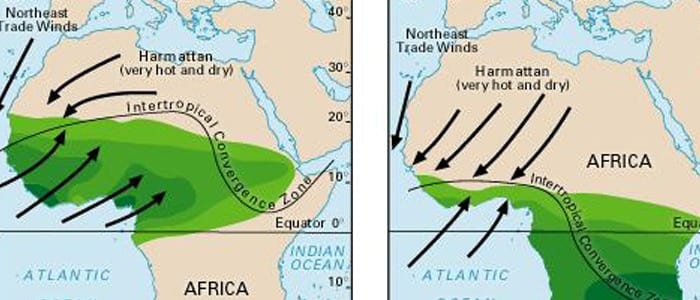Trinidad and Tobago enjoyed a mostly dust-free February, but by the end of the month, an incursion of Saharan Dust arrived. Concentrations are set to increase through the next 72 hours, with lingering and fluctuating dust levels through the next ten days.
What you need to know
— Saharan Dust Surges: A moderate to high concentration surge of Saharan Dust has arrived across Trinidad and Tobago on Tuesday, February 28th, 2023, and is forecast to peak by Friday, March 3rd, 2023. However, mild to moderate levels of Saharan Dust is forecast through the next ten days.
— Impacts: Through the next seven to ten days, air quality levels across Trinidad and Tobago are forecast to be between good and moderate, occasionally dipping to levels that are unhealthy for sensitive groups during high-traffic periods as well as in the vicinity of bushfires.
— What Should You Do: Sensitive groups may need to take the necessary precautions, particularly during high-traffic periods.
Current AQI Levels Across T&T

All official air quality monitoring stations from the Environmental Management Agency (EMA) at Arima, Port of Spain (Beetham), and Point Lisas are reporting good air quality levels, while the station at San Fernando reporting moderate air quality levels. The station located at Signal Hill, Tobago, is not reporting data.
These measurements are based on PM2.5 (particulates the size of 2.5 micrometers and smaller, usually associated with increases in Saharan Dust, vehicle exhaust, and smoke) and PM10 particulates.
Over the last 24 hours, visibility remained unaffected by Saharan Dust at the Piarco International Airport and the A.N.R. Robinson International Airport at Crown Point, Tobago.
Saharan Dust Forecast

Ongoing Surge: Through March 11th, 2023
While concentrations remain moderate on Wednesday, March 1st, 2023, from Thursday, March 2nd, 2023, Saharan Dust concentrations are forecast to increase and peak through Friday, March 3rd, 2023 with moderate to high concentrations remaining across the country through early Monday, March 6th, 2023. Thereafter, mild to moderate concentrations of Saharan Dust are forecast through the remainder of the forecast period (through March 11th, 2023)
Through the next seven to ten days, air quality levels across Trinidad and Tobago are forecast to be between good and moderate, occasionally dipping to levels that are unhealthy for sensitive groups during high-traffic periods as well as in the vicinity of bushfires.
What does this mean for you?


The air quality is forecast to be lowered primarily during high traffic periods, particularly between 6:00 AM and 9:00 AM and again from 3:00 PM through 6:30 PM, as well as during times of blowing smoke and dust from bushfires.
The surges of dust during this time of year are due to the Harmattan, a season in the West African subcontinent that occurs between the end of November and the middle of March. During this season, a predominant northeasterly trade wind (dubbed the Harmattan Winds) blows from the Sahara Desert over Western Africa into the Gulf of Guinea.

During this period, a ridge of high pressure stays over the central Sahara Desert, and the Intertropical Convergence Zone (ITCZ) remains over the Gulf of Guinea. The Harmattan wind accelerates when it blows across the mountain massifs of Northwest Africa. If its speed is high enough and it blows over dust source regions, it lifts the dust and disperses it.
Dust that makes it into the upper levels of the atmosphere can then get transported across the Atlantic Ocean and affect the Eastern Caribbean. These Saharan Dust outbreaks tend to be milder in the Eastern Caribbean than the dust outbreaks associated with West African thunderstorms driving dust into the upper atmosphere from April through November.











